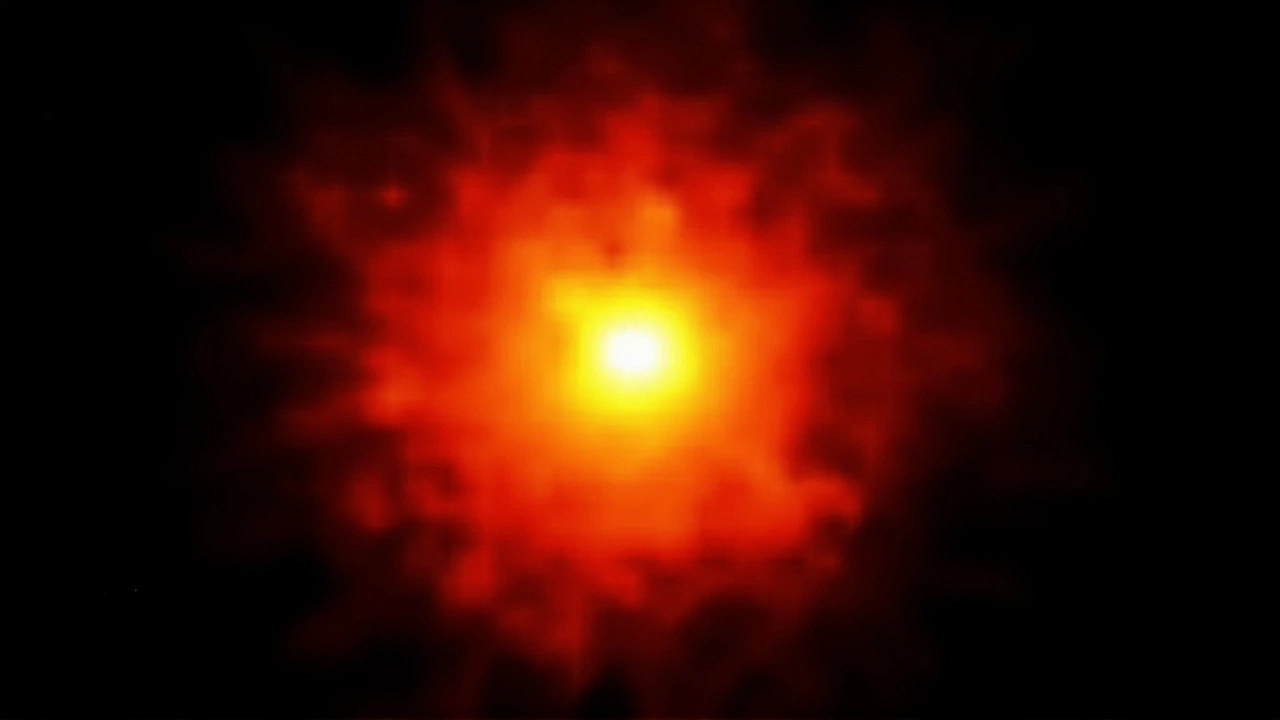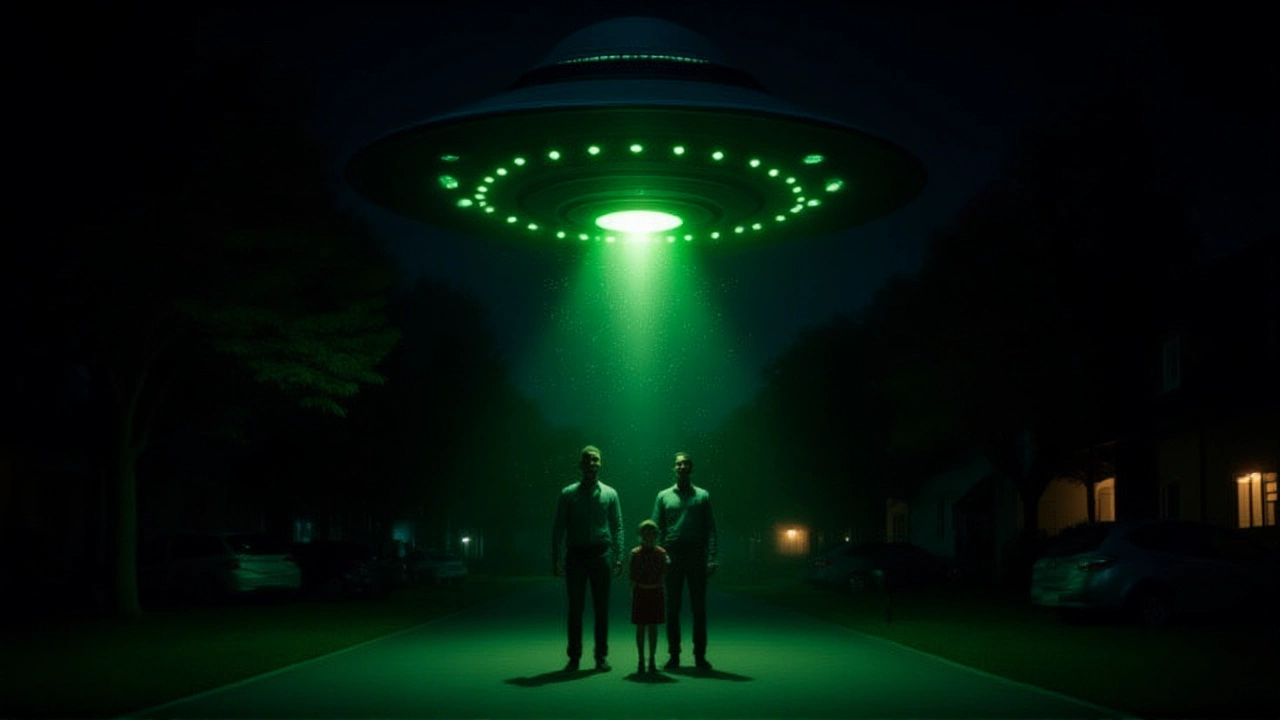When Avi Loeb, Chair of the Department of Astronomy at Harvard University, told an audience at a recent conference to "take vacations before October 29," the comment sparked a wave of both amusement and genuine concern. Loeb’s warning centers on 3I/ATLAS, an interstellar object slated to swing past the Sun at its closest point – perihelion – on 29 October 2025, just inside the orbit of Mars. While NASA assures the public that the object poses no collision risk, the debate over its true nature has reignited the kind of speculation usually reserved for science‑fiction headlines.
What’s Coming on Oct 29: The 3I/ATLAS Perihelion
According to calculations released by the Minor Planet Center, 3I/ATLAS will reach perihelion at a distance of roughly 1.4 AU from the Sun, cutting a path that skirts the red planet’s orbital lane. That means the object will be visible to a handful of professional telescopes and, under clear skies, to experienced amateur astronomers armed with mid‑range reflectors. Its estimated diameter of about 20 kilometres – "roughly the size of Manhattan," as some astronomers put it – makes it one of the largest interstellar visitors ever recorded.
For context, the famous interstellar interloper ‘Oumuamua whizzed through the inner Solar System in 2017 and measured only about 120‑metres across. By comparison, 3I/ATLAS is a planetary‑scale projectile, prompting scientists to question whether such a massive rock could simply be a natural fragment.
Scientific Debate: Alien Hypothesis vs. Conventional Science
Loeb, who has built a reputation for advocating the "alien technology" explanation for unusual space objects, argues that the object's size, composition, and orbital precision cannot be dismissed lightly. "The possibility that this object could be artificial cannot be ignored," he told The New York Post. He points to the fact that 3I/ATLAS emits nickel tetracarbonyl – a compound produced almost exclusively by Earth's industrial processes – at a rate of about four grams per second, and that its spectrum shows no iron, a staple of ordinary asteroids.
Counterbalancing Loeb’s assertions, Richard Moissl, Head of Planetary Defence at European Space Agency told Newsweek that "there have been no signs pointing to non‑natural origins of 3I/ATLAS in the available observations." Moissl emphasized that the object's light curve – the way its brightness changes over time – can be explained by a tumbling, irregularly shaped rock, a common characteristic of near‑Earth objects.
NASA, represented by its public affairs office, reiterated that all tracking data indicates a safe fly‑by, with the object never approaching closer than 0.1 AU to Earth. The agency also noted that the James Webb Space Telescope and the Hubble Space Telescope are scheduled to capture high‑resolution spectra during the object’s perihelion window, aiming to settle the composition question once and for all.
Observational Evidence: Brightness, Chemistry, and Trajectory
Recent computer simulations run on the supercomputers at the University of Hawaii suggest that 3I/ATLAS exhibits a fluctuating brightness pattern consistent with a non‑principal‑axis rotation, sometimes called "tumbling." This pattern, combined with a surface that appears patchy in albedo, hints at a heterogeneous makeup – perhaps the remnants of a manufactured structure shedding debris.
At the same time, observations from the Keck II telescope on Mauna Kea detected the faint signature of nickel tetracarbonyl in the object's coma. The compound, Ni(CO)₄, is notoriously toxic on Earth and only forms at temperatures around 70 °C in industrial settings. Its detection in space is unprecedented, prompting a flurry of papers in the Astrophysical Journal Letters.
Another striking feature is the object's orbital alignment. Its trajectory lies within five degrees of the ecliptic plane – the same thin slice of space where most planets orbit. Such precision could be coincidental, but Loeb argues it "might have targeted the inner Solar System as expected from alien technology," invoking the idea that a probe could be using gravitational assists to glide through planetary neighborhoods.
Related Celestial Neighbour: Asteroid 2025 PN7 as a “Quasi‑Moon”
While 3I/ATLAS grabs headlines, another object has been mistakenly billed online as Earth’s "second moon." Asteroid 2025 PN7 has entered a quasi‑satellite orbit that will keep it near Earth for the next 126 years, until 2083. NASA’s Jet Propulsion Laboratory in Pasadena clarifies that the asteroid never comes closer than about 4 million kilometres – roughly ten times the distance to our Moon – and therefore exerts no measurable tidal or gravitational effect.
Quasi‑moons aren’t new; the near‑Earth asteroid 469219 Kamo’oalewa has been in a similar co‑orbital state for decades. China’s Tianwen‑2 mission, launched in May 2024, is slated to rendezvous with Kamo’oalewa in late 2027, aiming to bring back samples that could shed light on how such objects form and evolve.

Public Reaction and the Role of Media
Social media platforms have been awash with speculative memes, many portraying 3I/ATLAS as a giant metallic UFO hovering over Martian deserts. The rapid spread of these images underscores a growing public appetite for cosmic mysteries, especially when framed by a charismatic scientist like Loeb. Yet, experts warn that sensationalism can eclipse genuine scientific inquiry.
"People love a good story," says Dr. Emily Zhang, a planetary scientist at Caltech who is not involved with the ATLAS observations. "But the danger is that hype can drown out the nuanced data that actually moves the field forward." She adds that the upcoming JWST observations will be publicly released, allowing citizen scientists to independently verify findings.
In the meantime, travel agencies have reported a modest uptick in bookings for desert stargazing tours in Chile and New Mexico, where dark skies could offer a glimpse of the passing object. Whether that’s a smart business move or a side‑effect of fear‑fuelled curiosity remains to be seen.
Key Facts
- Perihelion date: 29 October 2025.
- Estimated size: ~20 km (about Manhattan’s length).
- Nickel tetracarbonyl emission: ~4 g s⁻¹, no iron detected.
- Trajectory within 5° of the ecliptic plane.
- Closest approach: just inside Mars’ orbit, ~1.4 AU from the Sun.
- Asteroid 2025 PN7 will act as a quasi‑moon until 2083.
Frequently Asked Questions
What makes 3I/ATLAS different from typical asteroids?
Unlike most asteroids, 3I/ATLAS emits nickel tetracarbonyl – a compound that on Earth only forms in industrial processes – and shows no iron in its spectrum. Its size (≈20 km) and its orbit, aligned within five degrees of the ecliptic, add further anomalies that set it apart from the typical rocky debris we observe.
Will 3I/ATLAS pose any danger to Earth or Mars?
NASA’s trajectory models show the object will pass well inside Mars’ orbit, remaining at least 0.1 AU from Earth. Neither NASA nor ESA have indicated any impact risk, and the object’s speed at perihelion – about 30 km s⁻¹ – makes a collision highly unlikely.
How reliable are the alien‑technology claims?
The alien hypothesis is championed by a handful of researchers, most notably Dr. Avi Loeb, who points to the object's unusual chemistry and precise orbit. However, the majority of planetary‑defence experts, including Richard Moissl of the ESA, state that existing data can be explained by natural processes, and they await the JWST spectra before drawing firm conclusions.
What is a "quasi‑moon" and why does 2025 PN7 matter?
A quasi‑moon (or co‑orbital object) shares a near‑resonant orbit with Earth, staying close for decades without being gravitationally bound like the real Moon. 2025 PN7 will linger near Earth until 2083, offering a chance to study such dynamics and, possibly, to test future mission concepts.
When and how can the public see 3I/ATLAS?
During the weeks surrounding 29 October 2025, the object will be observable from dark‑sky sites in the Southern Hemisphere using medium‑size telescopes. Amateur groups equipped with 10‑inch reflectors may catch a faint glimmer, especially if skies are clear and moonlight is minimal.




